War and Animals: The Thousands of Animals That Are Martyrs of the Donbass Conflict
12:55 GMT 03.05.2022 (Updated: 15:34 GMT 16.01.2023)
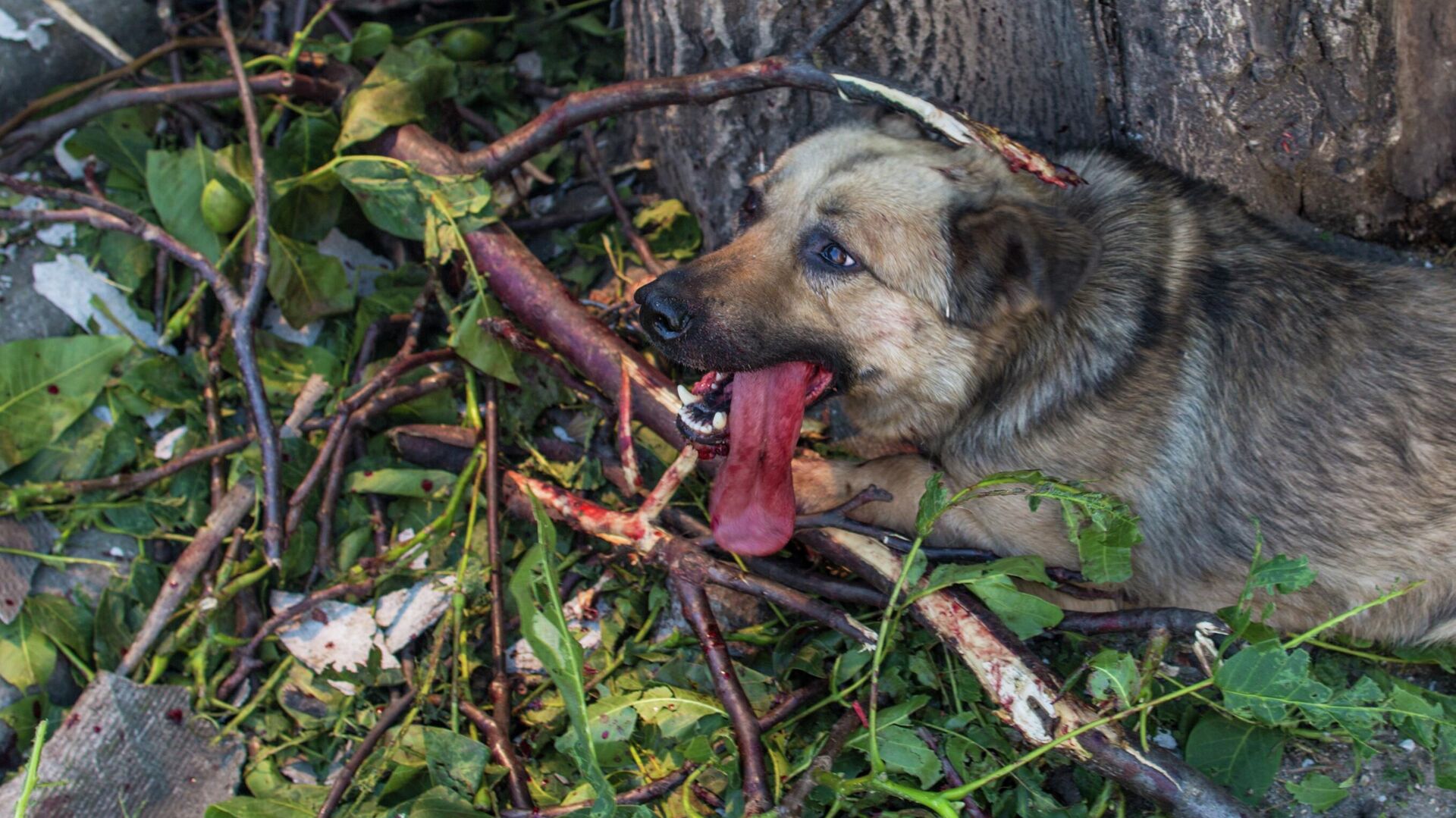
© Sputnik / Andrei Stenin
/ Subscribe
The eight-year conflict has wrought terrible tragedy on the humans involved. But there is another group which has been swept up in this whole sorry affair and is often overlooked - the region's animals. Pain, wounds, wandering, abandonment, and death - the fate of the animals in the conflict is a clear indication of what a global calamity this is.
This is the story of the animals of Donbass that became hostages and the area's most vulnerable victims, and of the real people who have been trying to save dogs, horses, birds and cats.
People were fleeing the war. When it became dangerous to live in Donbass, thousands of refugees left their homes and apartments. Many men stayed behind to defend their towns and villages, but they sent women, the elderly, and children as far away as possible from the bombs and shelling. They often took only the bare essentials which often excluded pets. But animals were abandoned even more frequently because their owners had been killed. There were hundreds of thousands of hungry, wounded, and unwanted animals: dogs, horses, and cats on the streets of towns and villages of Donbass.
Paw and Bun
Galina Kondrashova, a pet volunteer, did not leave Donetsk in 2014. She accepted the war as an inevitability and said that if given the choice of staying or leaving again, she would stay without hesitation.
In September 2014, when hostilities broke out, only three families remained in the alley near the railway station. Everyone else left Donetsk - some moving to quieter areas and some leaving their dogs and cats behind.
There was never enough food for anyone, animals or people. Galina and her parents received humanitarian aid and divided it among the animals that had clung to their home or lived in neighbouring yards.
Donetsk was often shelled in the autumn of 2014. On 14 September shells hit the railway station. and a splinter of shrapnel caught Galina in the leg. Saving oneself would appear a big enough task for anyone but Galina saved the animals - persistently, routinely, ignoring the risks.

A splinter that hit pet volunteer Galina Kondrashova during shelling of Donetsk in the autumn of 2014.
© Sputnik / Galina Kondrashova’s Personal Archive
“One autumn morning, when the shelling had stopped and I could leave the house, I heard crying in the neighbouring yard,” Galina remembers. “It sounded like a little child, so soft and pitiful. It turned out that an old sheepdog, which the neighbour never let off the chain, was ‘crying’. I still do not know how it survived. There was an apple tree growing next to the kennel, and the dog had been eating apples for a long time. My mother and I unchained the dog, brought it to our yard, washed and fed it, and named it Lapushka [a pet form of “Lapa” or “Paw”]”.
Paw was more than 15-years old. The next day, to the surprise of everyone, the dog had a puppy. We called it Bun. As time passed, Paw became a round, well-groomed old lady, and Bun never left her side. The local militia, who were patrolling the railway, helped us out.
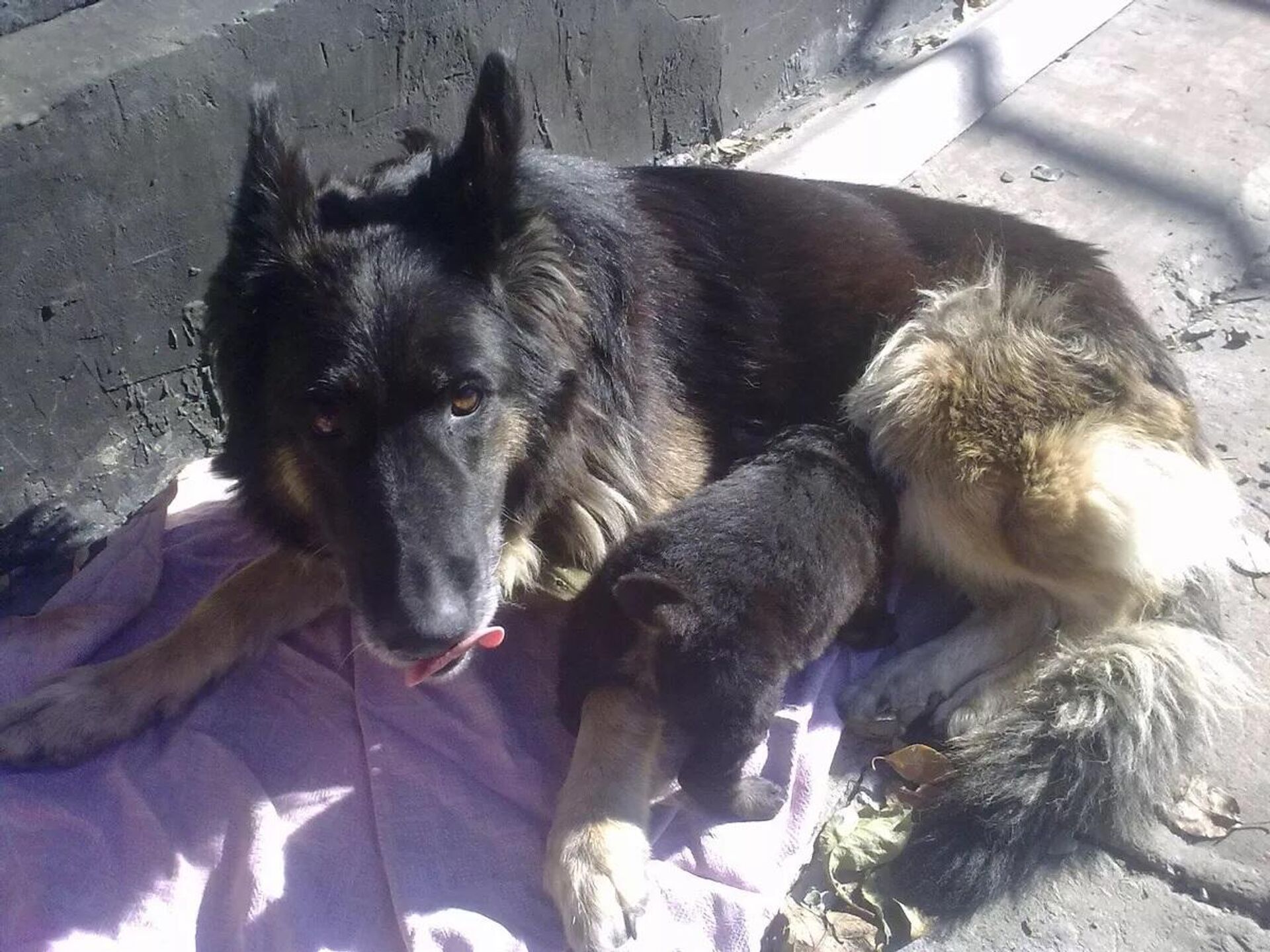
Paw and her puppy Bun, rescued by Galina Kondrashova's family.
© Sputnik / Galina’s Personal Archive
“It was very challenging: to feed and treat nine cats, two of our own dogs, two neighbours' dogs and Paw with her puppy. We are grateful to the militiamen who patrolled the railway station; when they found out that we were staying because of the animals, they brought us tins of stew and cereals,” Galina recalled.
Sadly, tragedy intervened: a shell exploded near Galina's house during one of the attacks. Windows and doors were blown out, the house buckled and Bun was crushed by the blast. The next day Bun died.
“It was 2015 and I still remember the bloodied dog dying in my arms,” said Galina.
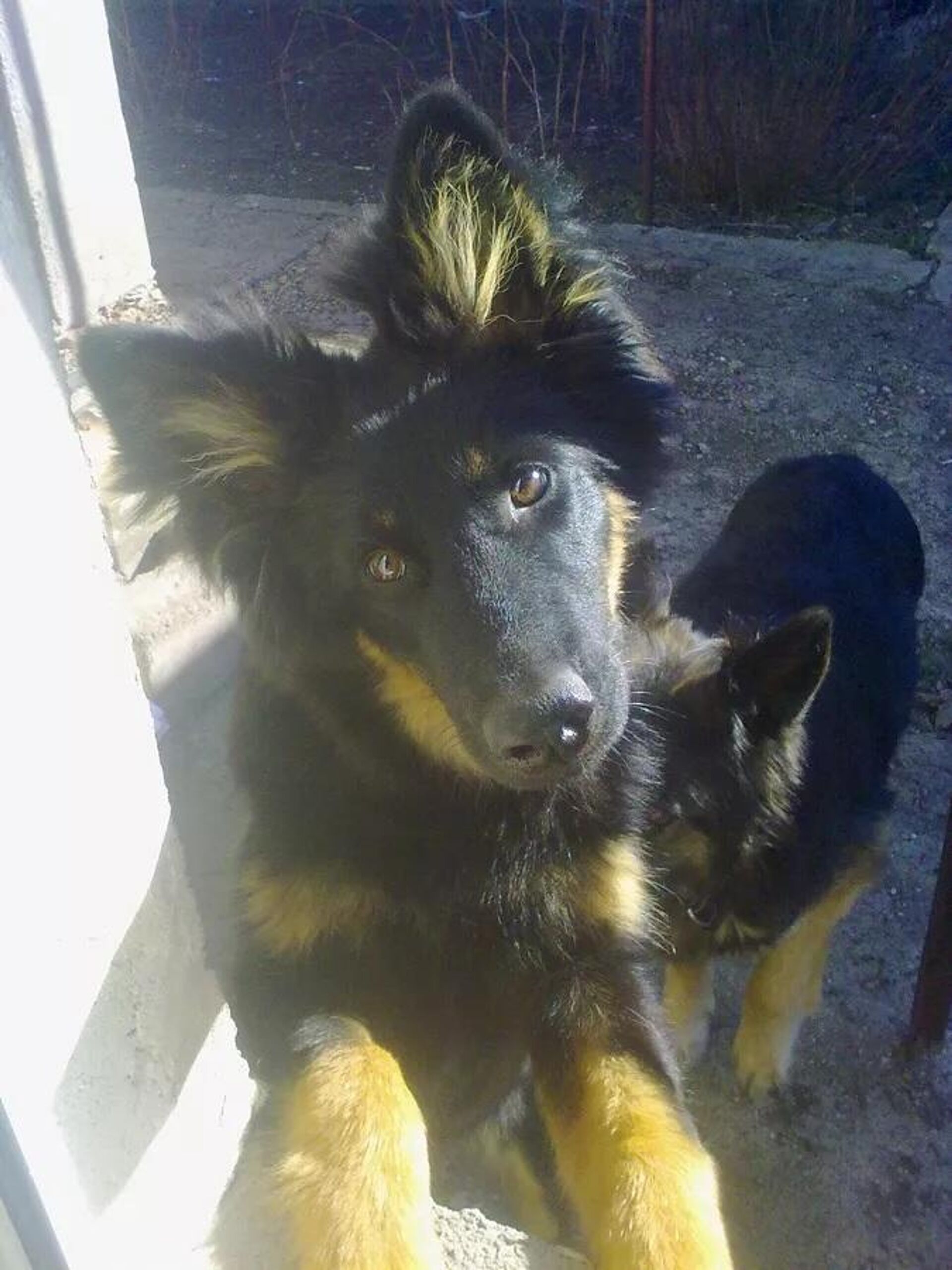
The deceased Bun.
© Sputnik / Galina Kondrashova’s Personal Archive
Paw lived another three years. She went blind and grey, used to go out into the yard and stand for hours near the kennel where Bun liked to sleep. To her dying day, Paw loved apples.
“By the way, the neighbour returned for a day before Paw died. He knocked on our gate and demanded we give back his dog. But Paw let it be known by her barking that she wouldn't let him in the yard, and she didn't like him anymore,” the pet volunteer recalled.
According to accounts from volunteers, there were 15,000 inhabitants in Debaltsevo before the war. But when shelling started and many evacuated, only 2,500 remained in the city. And hundreds of pets.
People, hiding in basements from shelling, would untie their dogs so that they had a chance to escape, run away, and find food.
Staff at pet shelters in Donbass said that most of the dogs and cats were brought in after 2014. Some had lost their owners, some came from homes which had been destroyed, and others had been left behind by owners who had intended to return for them but never did. They are all victims of this war.
Nevertheless, there have always been people in Donbass who, under shelling, despite the risk of losing their own life, have rescued animals that belonged to seemingly total strangers. They rescued them, fed them, gave them shelter and performed free operations - just as Maxim Vakulenko, a paediatric surgeon from the DPR, did.
Percy
People in Donetsk say the animals seem to know when shelling is on its way - they start behaving oddly and, in doing so, have often saved their owners' lives. Such was the case with Percival - also know as Percy or Peaches - the cat belonging to Galina's grandmother. That cat adored her grandmother.
“I gave Peaches to my ‘overjoyed’ grandmother, who sighed, looked at the ginger kitten and decided that it would be a better choice than another turtle from a neighbouring pond or a huge dog in a one-room flat until it was adopted by a new family,” said Galina smiling.
The war came. Shells were falling very close as her grandmother lived only a few kilometres from the front line. One evening a large-calibre shell literally pierced the neighbouring house from top to bottom. Galina's family decided to evacuate the grandmother from her flat.
Except that Peaches was frightened, crawling under the bath and hissing and biting every time someone tried to get him out of there.
The neighbours who helped with the evacuation couldn't wait in their car any longer, so the cat was left with a large bowl of food and a bucket of water and they took the grandmother to safety.
The village was shelled for another two days.
“There was no transport and my mother and I were already making plans to go on foot and retrieve Percival. But we got lucky: on the day we decided to find the cat, a bus driver agreed to take a group of people there and back. We reached the place like paratroopers - sometimes crawling, sometimes running, sometimes hiding in doorways. There was rumbling on all sides, and sometimes shell splinters clattered on the rooftops of buildings. Percy had clearly decided that he'd had enough. Rather than cowering under the bathtub, he allowed us to put him in the rucksack and remained silent all the way home,” recalled Galina.

Percy the Cat.
© Sputnik / Galina Kondrashova’s Personal Archive
A few weeks after they were reunited with Percival, they noticed that he unmistakably detected when shelling was about to begin, and accurately predicted whether shells were coming towards the house. If Peaches ran and hid in the back of the house, the family knew that it was time for everyone to hide. And thus, Galina recalls, one winter's day, “there was a faint popping sound in the distance. Percy was sitting on the windowsill, looking at the snowfall. And then, a second later, the cat jumped to the floor and ran into the bedroom. At that moment, we were having dinner as a family. Thanks to the cat, we managed to retreat from the windows and hide in the far room."
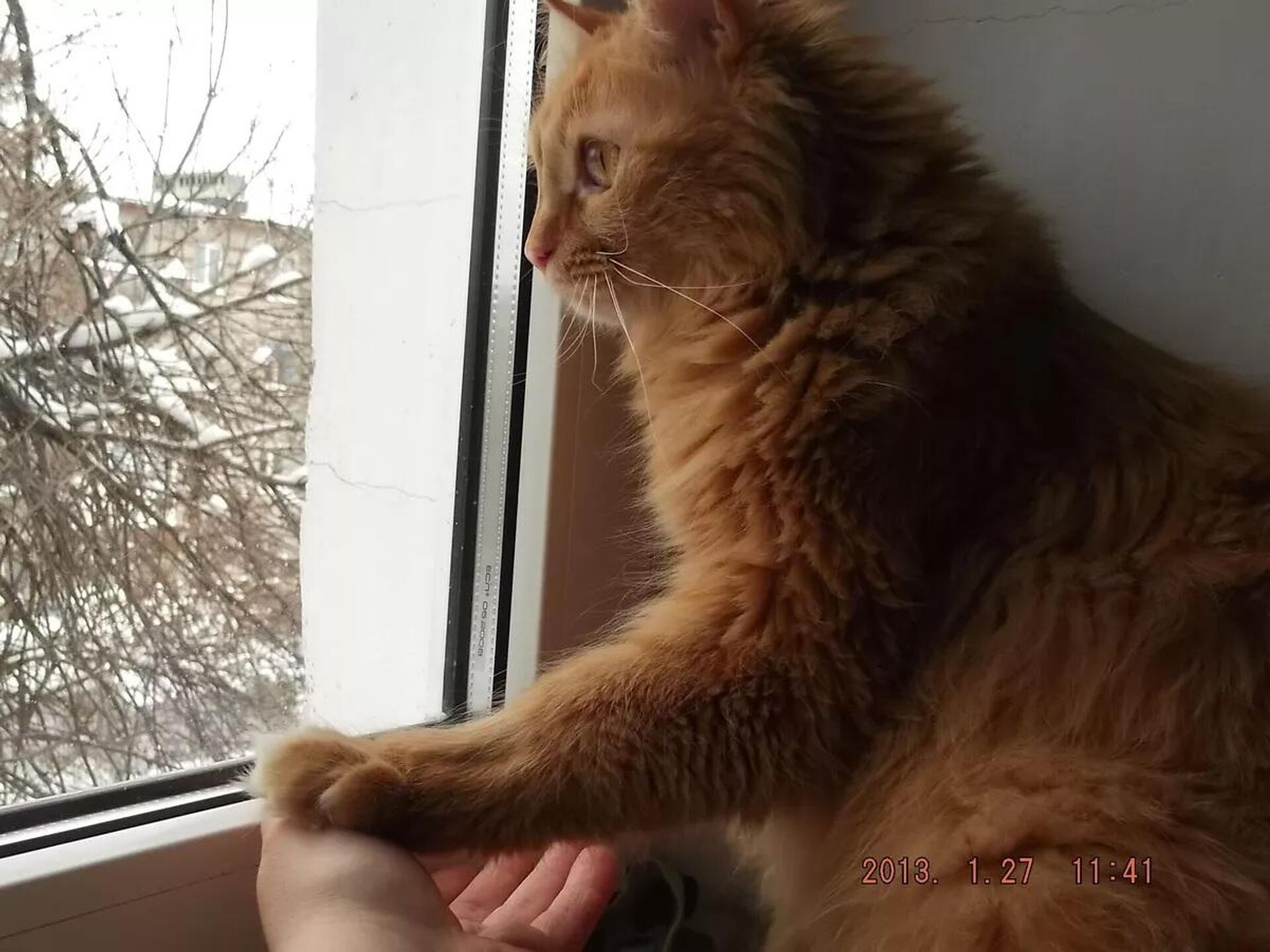
Percy the Cat.
© Sputnik / Galina Kondrashova’s Personal Archive
The house was hit by weapons from a Grad multiple rocket launcher. Almost all the windows were shattered, shrapnel pierced the fence and the cinder block walls. But thanks to the cat, none of the family were hurt.
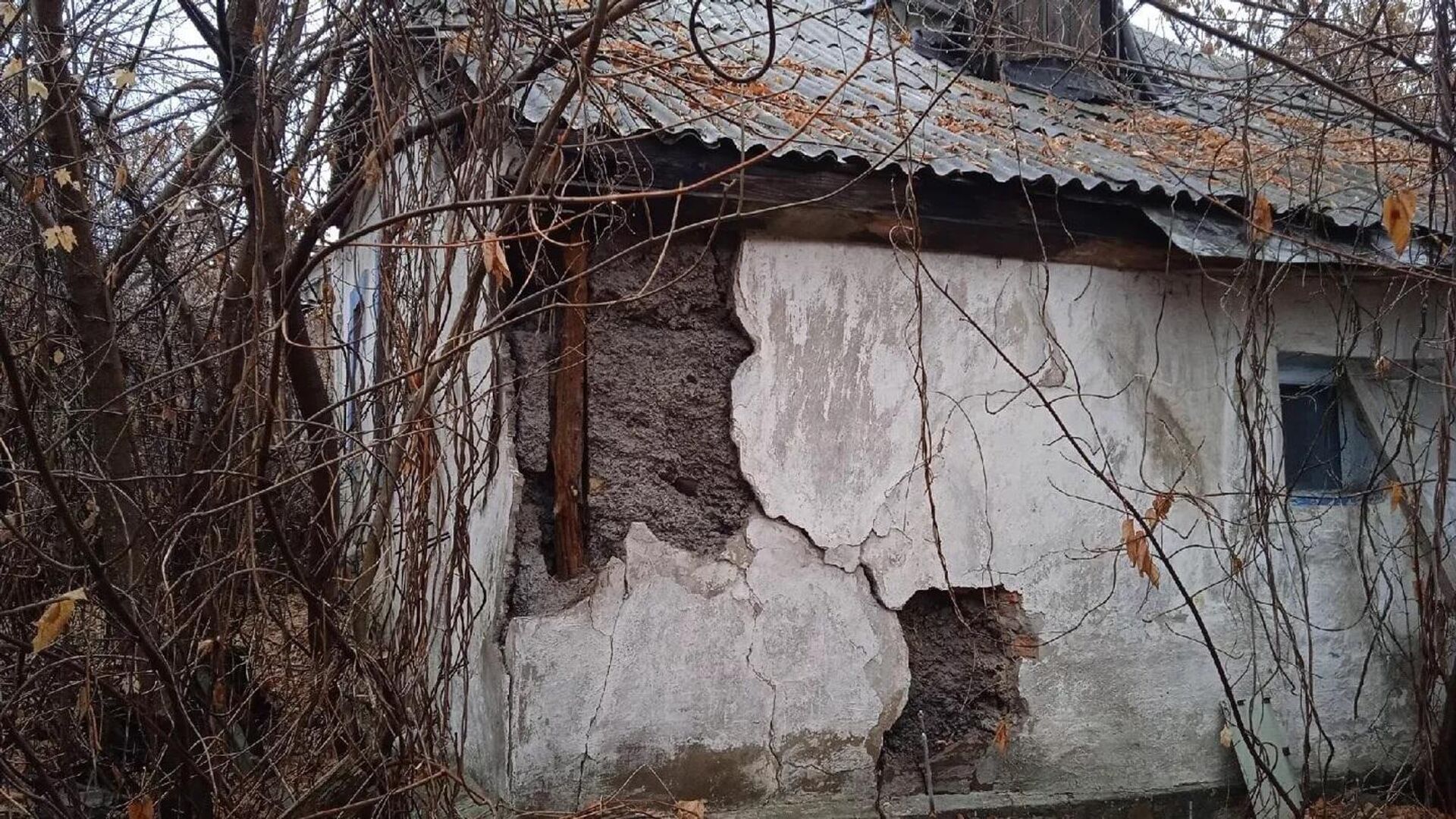
The house of Donetsk pet volunteer Galina Kondrashova, which was hit by a Ukrainian shell.
© Sputnik / Galina Kondrashova’s Personal Archive
Percy lived a long life. He remained by his beloved grandmother to the end of her days and, for the rest of his feline life, frequently helped Galina's family avoid harm with his unmistakable instincts.

Percy the Cat with his owner Lydia Aleksandrovna, Galina Kondrashova's grandmother.
© Sputnik / Galina Kondrashova’s Personal Archive
Humans and Birds
Volunteers rescued not only domestic animals but also wild ones.
Even before the war Kondrashova used to help wild animals but back then it was much easier. As she said, there were doctors in town who could provide qualified assistance to wild animals, and there was communication with rehabilitation centres in Ukraine.
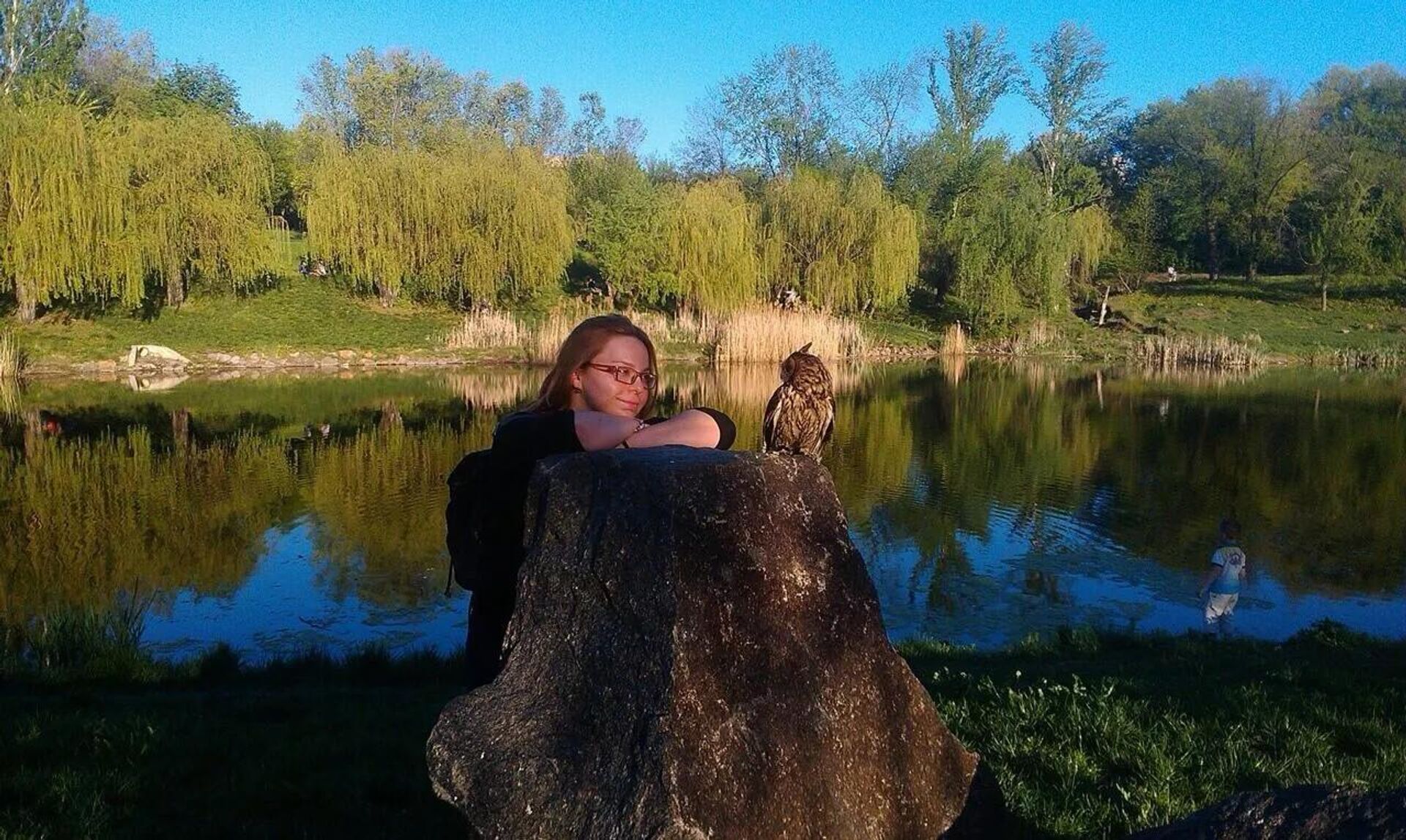
Galina Kondrashova, a pet volunteer from Donetsk, and an owl.
© Sputnik / Galina Kondrashova’s Personal Archive
In 2014, everything changed. When the war broke out, almost all the veterinary clinics closed down and the vets left.
“To be honest, I sometimes gave in to despair,” Galina admitted. “The endless shelling, no water, no light and no gas, the wounded animals that people would pick up in our village and bring to me. No, I am not a veterinarian, not a human doctor and not a nurse. I am a teacher who has been helping animals in distress since I was a child."

Donut the squirrel kit, rescued by Donetsk animal volunteers.
© Sputnik / Galina Kondrashova’s Personal Archive
In 2016, when shelling wasn't so intense, Galina met her husband-to-be, who was just as concerned about the plight of others. Together, they began to think of ways to help animals that were suffering as much from the conflict as people.
They founded an animal aid group called “Pets of the DPR”.
The group collected information about veterinary clinics and placed advertisements for stray animals to be adopted. The volunteers also started building aviaries to rehabilitate wild birds.
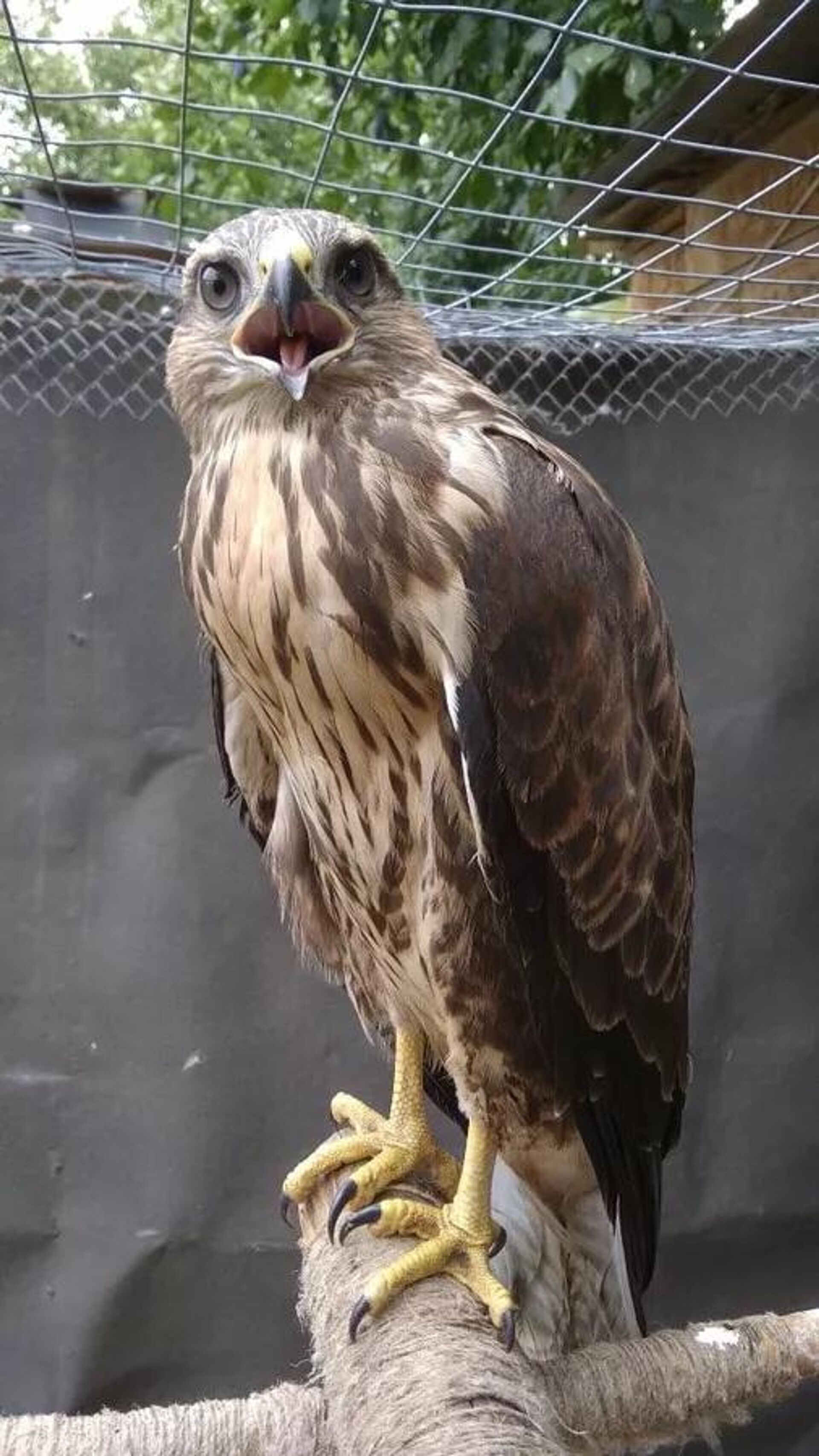
A hawk from Yenakievo rescued by animal volunteers.
© Sputnik / Galina Kondrashova’s Personal Archive
“Inhabitants gradually started coming back to Donetsk, and thanks to word of mouth people started to find out about us, bringing us birds for treatment and release,” said Galina.
Later on, according to Galina, she met a volunteer girl from the LPR who was engaged in rehabilitating birds and bats.
It was clear that people who came across injured or sick wild animals in the DPR and LPR very often did not know how to help and who to turn to.
Therefore, the volunteers in their group “Helping Wild Birds of the LPR and DNR” collected information on wild animals and on how to feed, treat and release them correctly.
Volunteers built aviaries for birds and squirrels, organised deliveries of animals to the republics, established contacts with the Ministry of Ecology and rehabilitation centres in Russia, fought poachers and engaged in educational activities for adults and children.
Over the years, volunteers have released dozens of falcons, hawks, owls, bats, jays, sparrows, tits and many other wild animals.
Today, despite the escalating military conflict, the volunteers are not intending to leave Donetsk. The lives of unreleased birds that help raise chicks and prepare them for release into the wild, injured squirrels, one large red-eared tortoise that was rescued by journalists from Mariupol, a whole flock of stray cats and dogs depend on them.
“I would like to say many thanks to all the caring residents of our republics,” said Galina. “Believe me, very few people would agree to take a wounded bird to the other end of the city while coming under fire, catch bats at home and find cockroaches for them, raise swifts and give birds the sky."
Men and Horses
“I didn't have much choice. How could I slaughter the horse I was working with? They promised to help, but quickly forgot their promises. In 2014, I was left alone with 14 horses, virtually without a livelihood and under constant shelling. The horses were thrashing against the walls with fear, suffering from colic, and I had to sleep with them in the stable. Any gunshot, any loud noise could cause a horse to become maimed, get stuck somewhere, get hurt”, said Julia Svetlichnaya, President of the Jaguar-Extreme Equestrian Club in Donetsk, who never left the DPR.
The club management took the elite horses to Ukraine, but those which were old or not from such a good bloodline were abandoned on the frontline. Julia was left with them to endure shells coming into the stables, and the concomitant wounds, hunger and lack of medication.
The horses could not work under these stressful conditions, and people stopped coming to the stables. Two or three people would come once a week. For a rider to mount a horse in such circumstances was a huge risk as a sudden bout of firing could cause the animal to rear or bolt and possibly cripple the rider.
A small group of 12 to 16-year-old children stayed with Julia to help out every day as the horses needed care: the animals had to be cleaned, fed, treated, exercised ... In short, the usual chores that cannot be neglected even under fire.
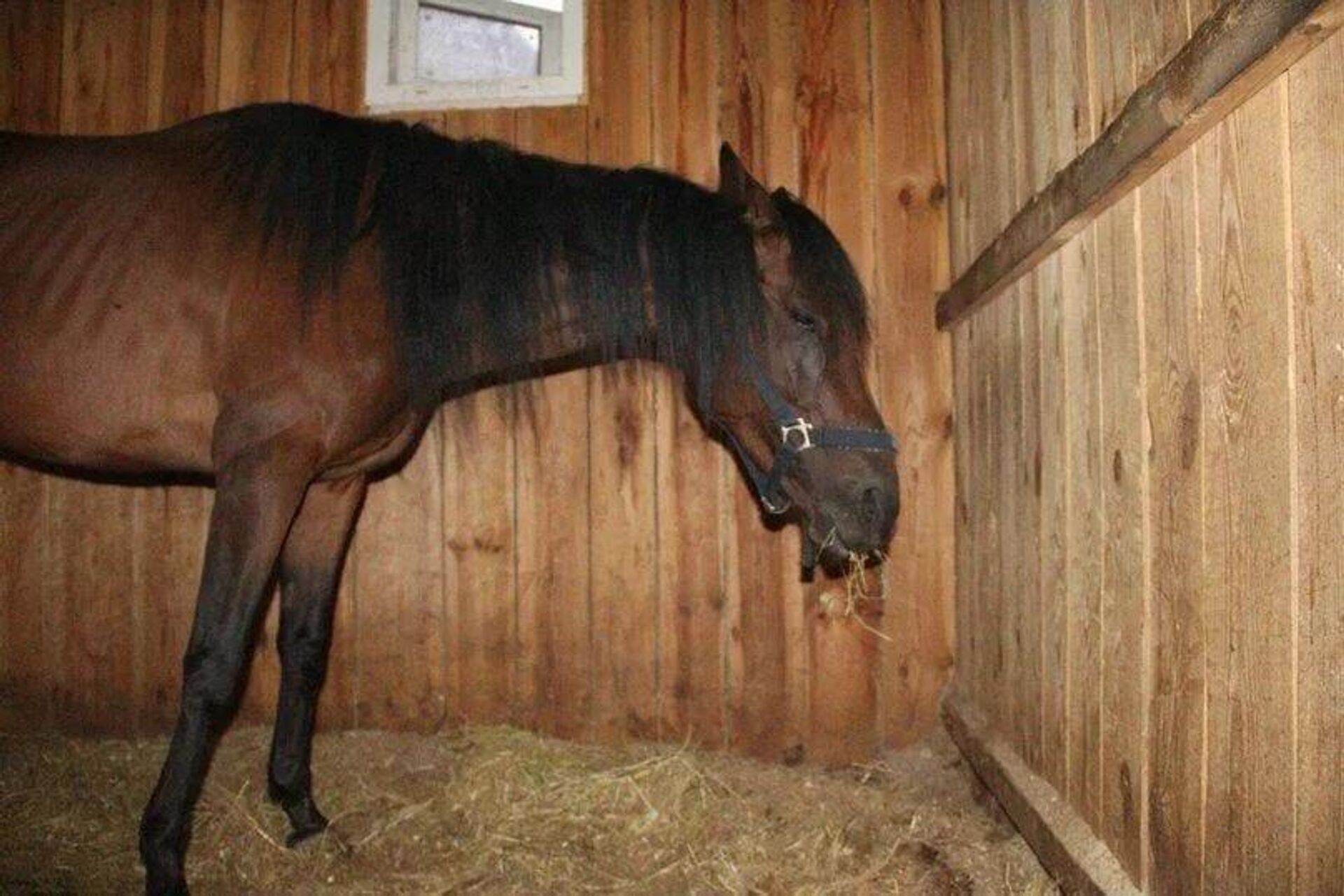
One of the exhausted horses brought to Donetsk from the Starobeshevo district of Donetsk region by Alexander Zakharchenko, the then-head of the Donetsk People's Republic.
© Sputnik / Julia Svetlichnaya’s Personal Archive
In 2015-16, the horses were more or less used to living under shelling, and they became calmer. The Kalininsky district of Donetsk was shelled frequently and there were hits near the stables, the building was contiguous with the mine. In 2015, a shell hit the mine, the entire drainage building burnt down, there was no water in the stable for a long time, and the lack of water (a horse needs between 50 and 60 litres a day) was a catastrophe in the making. Where horses are, water must be available all the time. The supply of water remains a problem to this day.
“Everything surrounding us was cut down by shrapnel,” Julia recalled. “Once, our horses came under a shower of shrapnel outside the Palace of Culture when it was hit. The riders were cut too”.
[The Palace of Culture in Donetsk at 54 Shevchenko Boulevard was shelled on 27 August 2014. Three people were killed. – Sputnik editor's note].
In 2014, DPR chief Alexander Zakharchenko and DPR Defence Minister Vladimir Kononov, who helped the horses at Jaguar, brought horses from Starobeshevo district. There was a small stable in Starobeshevo that was hit by a shell, some horses were killed, some were blinded. The animals that were rescued arrived in a terrible state and the team at the Jaguar stables - where the horses still live - had to treat them.

A horse that was brought from the Starobeshevo district to Donetsk by Alexander Zakharchenko who was then in charge of the DPR. It was nursed at the Jaguar-Extreme Equestrian Club in Donetsk.
© Sputnik / Julia Svetlichnaya’s Personal Archive
If a lack of water is the number one problem, number two was the lack of fodder. At times, they had to fill military Ural trucks with bales of hay in the field under mortar fire to feed the horses.
Julia's husband went on fearful excursions to find hay for the horses, often at the risk of being killed. For Julia herself, these trips were a nightmare of worrying as she waited for endless hours.
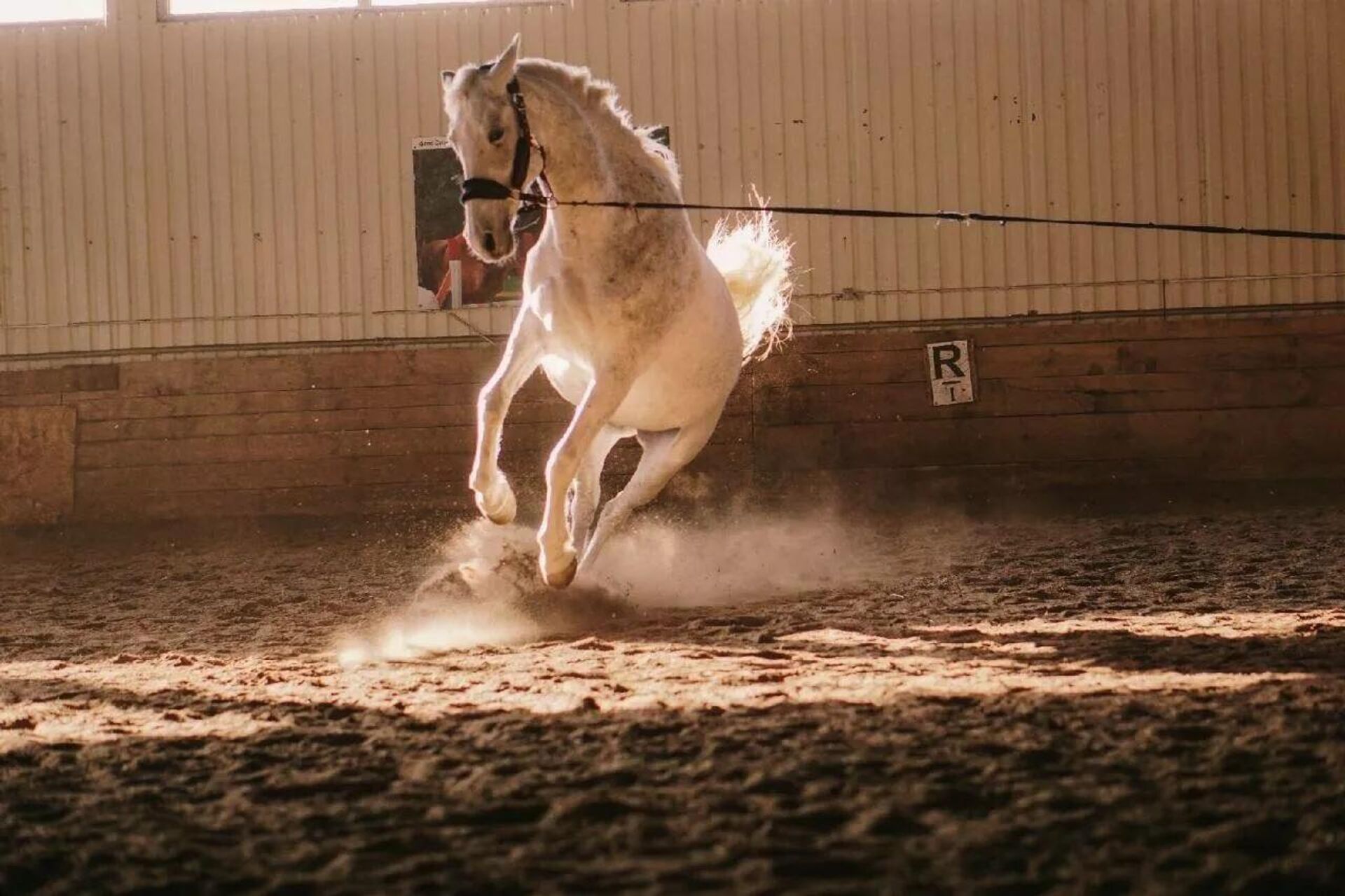
A rescued mare in foal in Donetsk.
© Sputnik / Julia Svetlichnaya’s Personal Archive
“There was a time when the horses were on the verge of starvation,” Julia said. “Then we appealed to people on the internet to bring food to the horses. After that, an old grandmother, who was more than 90-years old, came to us. She held in her hands a small bag of oats, three handfuls at most. She brought everything she had, handed it over and left. The shelling was taking place, you could see the shells flying, and this granny, hunched over with a stick, was walking slowly down the street ... I was looking after her and crying. It's painful to see what everybody has gone through”.
The Jaguar Equestrian Club has been rescuing horses for eight years. Last year, they rescued a mare named Sansara, taken from the slaughterhouse, who turned out to be in foal.
“We're expecting a foal any day now. Under the sounds of exploding shells, it's very Donbass-like...”, Julia smiles.
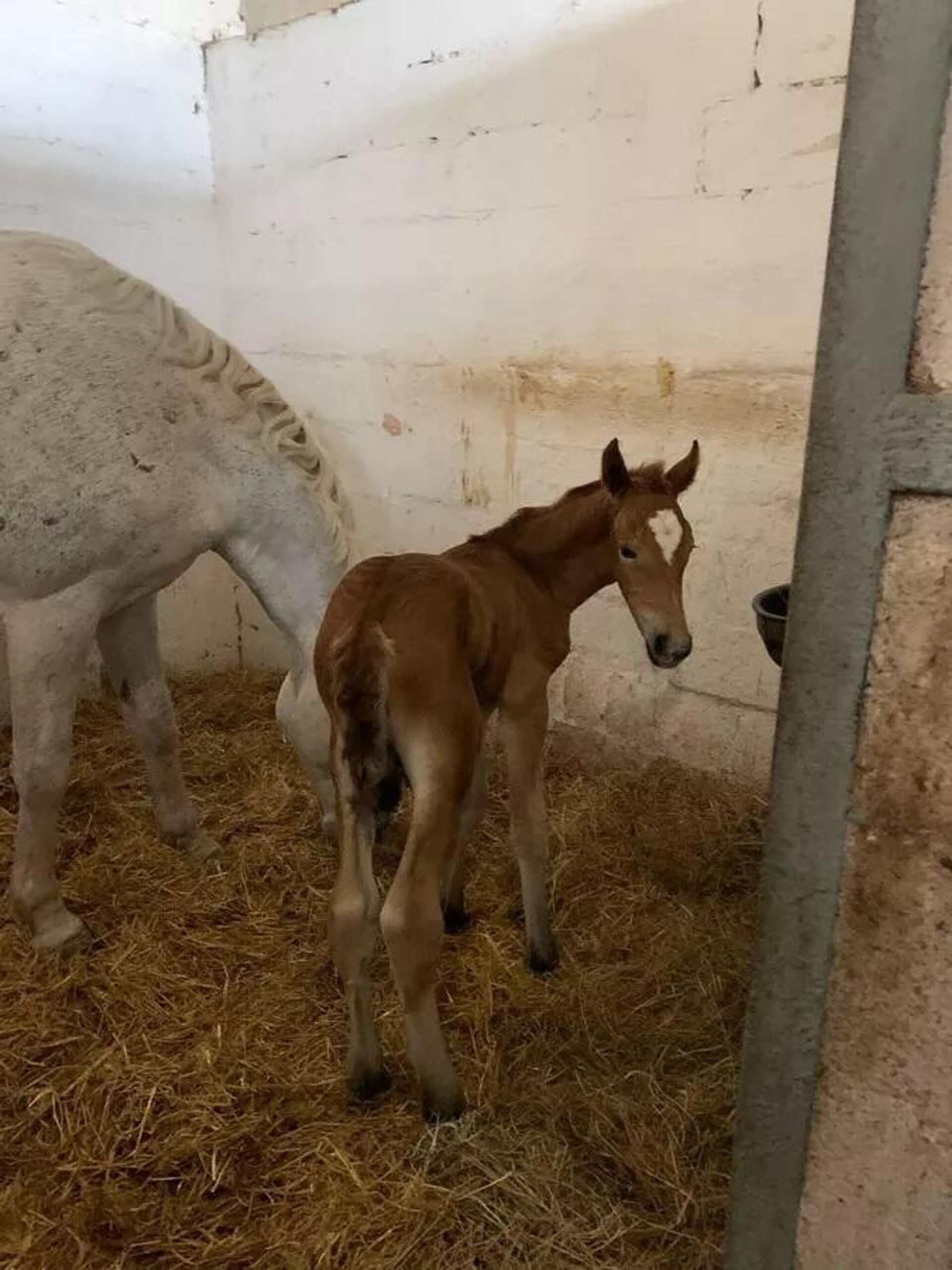
Little Sakura, a foal born on 22 April 2022 at the Jaguar Equestrian Club.
© Sputnik / Julia Svetlichnaya’s Personal Archive
They also rescued an old stallion, Lemon, from the slaughterhouse. The horse was 37, a long-liver. Lemon lived in Jaguar for a year and died of natural causes.
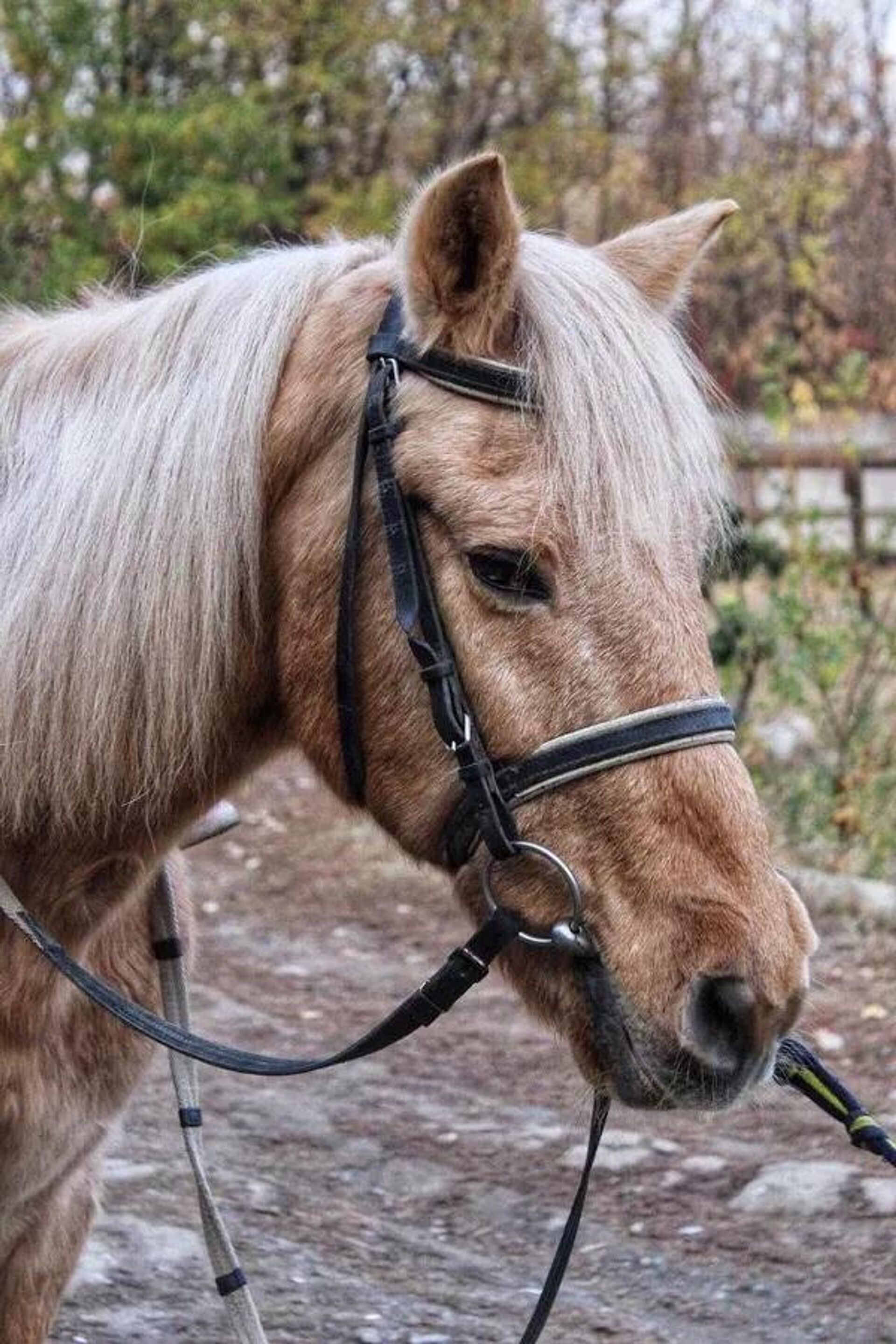
Lemon the Stallion.
© Sputnik / Julia Svetlichnaya’s Personal Archive
One of the mares pulled out of the shelling in 2014 starts to thrash about and neigh 15 to 20 minutes before artillery strikes begin.
“We know for a fact: if she neighs in a worried manner in the stable, 20 minutes later there will be incoming shelling.”
This is how animals warn people of mortal danger.
The stable is still struggling because of how the situation has deteriorated in Donbass. According to Julia, the head of the DPR, Denis Pushilin, DPR Defence Minister, Vladimir Kononov, head of the republic's Foreign Ministry Natalia Nikonorova and Alexey Nikonorov, chief of the DPR administration, are actively helping. The problems are the same as ever: medicine, fodder, electricity and, of course, not enough water.
The Jaguar Club has worked throughout all these years of strife and still does, providing hippotherapy for disabled children and children from the frontline areas.
Many children were brought here for therapy, wounded, frightened. There were those with cerebral palsy who could only fall asleep on a horse that rocked them. They had not slept for days before, so scared were they by the shelling. Some had their house destroyed, others had a shell falling next to their bed in their flat.
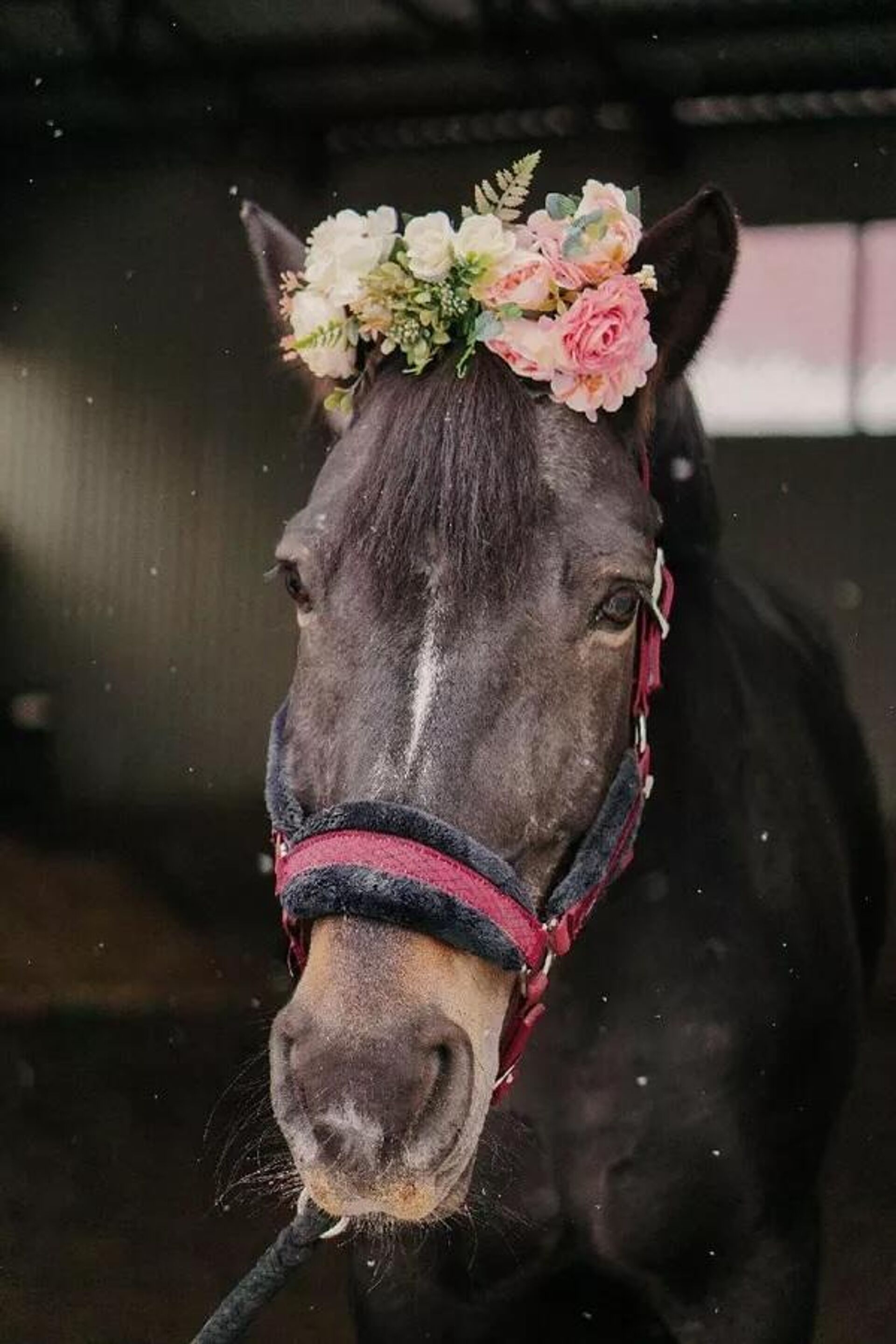
A mare from the Jaguar stable.
© Sputnik / Julia Svetlichnaya’s Personal Archive
“Sometimes it feels so hard to watch and immerse yourself in all this that you can't stand it, but you can't stop: these children need us. We must continue to save both the children and the horses,” said Julia.
The Grand Prix Equestrian Club has helped to save the Donbass horses. When the war broke out in 2014, most of the sporting, thoroughbred horses were taken to Ukraine, with some going to Europe. The club’s staff were able to take some horses from the village of Archada to Makeyevka, a safer stable at the time. The goal was to preserve the gene pool of thoroughbred horses in the republic.
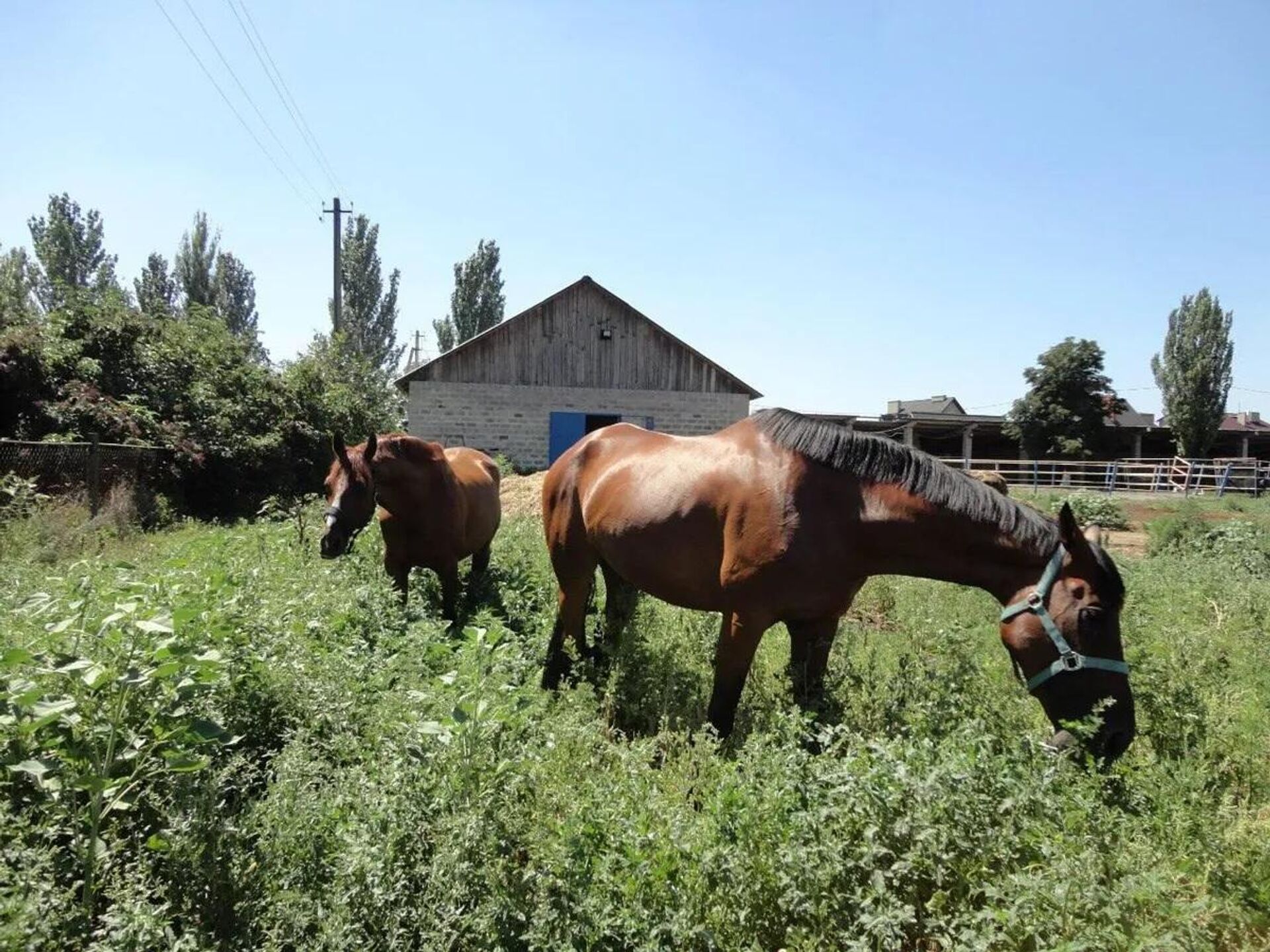
Rescued horses in Makeyevka.
© Sputnik / Angelika Lyubchak’s Personal Archive
“The herd from Archada was taken away two weeks after the Ilovaysk Cauldron started [on 7 August 2014],” said Angelika Lyubchak, director of the Grand Prix Equestrian Club in Makeyevka. “When we moved the horses on foot, these were untrained ones, foals, untrained in any way, traumatised. We moved them during curfew because it was dangerous to move them along the road with the cars, and we had no trucks for horses.”

Horses and foals that were brought out of Archada before the Ilovaysk Cauldron.
© Sputnik / Angelika Lyubchak’s Personal Archive
According to Angelika, many thoroughbred horses were slaughtered for meat in those years. Their owners handed them over, they could not keep them, some horses were wounded.
It was very difficult with fodder and medicine, and Alexander Zakharchenko - who at the time was leader of the DPR - came to help. In 2018-19, the Grand Prix Equestrian Club took horses from the Kolos stable in Lugansk, where there were no more available resources to keep animals.
The first animal to come to the Grand Prix Equestrian Club from the Lugansk People's Republic was a stallion from Kolos. Before anything else, he needed psychological rehabilitation. The horse was amazingly timid and would shy at the smallest hint of rustling or any other noise, which then gave him colic.
“We struggled with him for a long time, then slowly he started to get over it. The scar on his psyche remains, he is no longer a safe horse,” said Angelica.
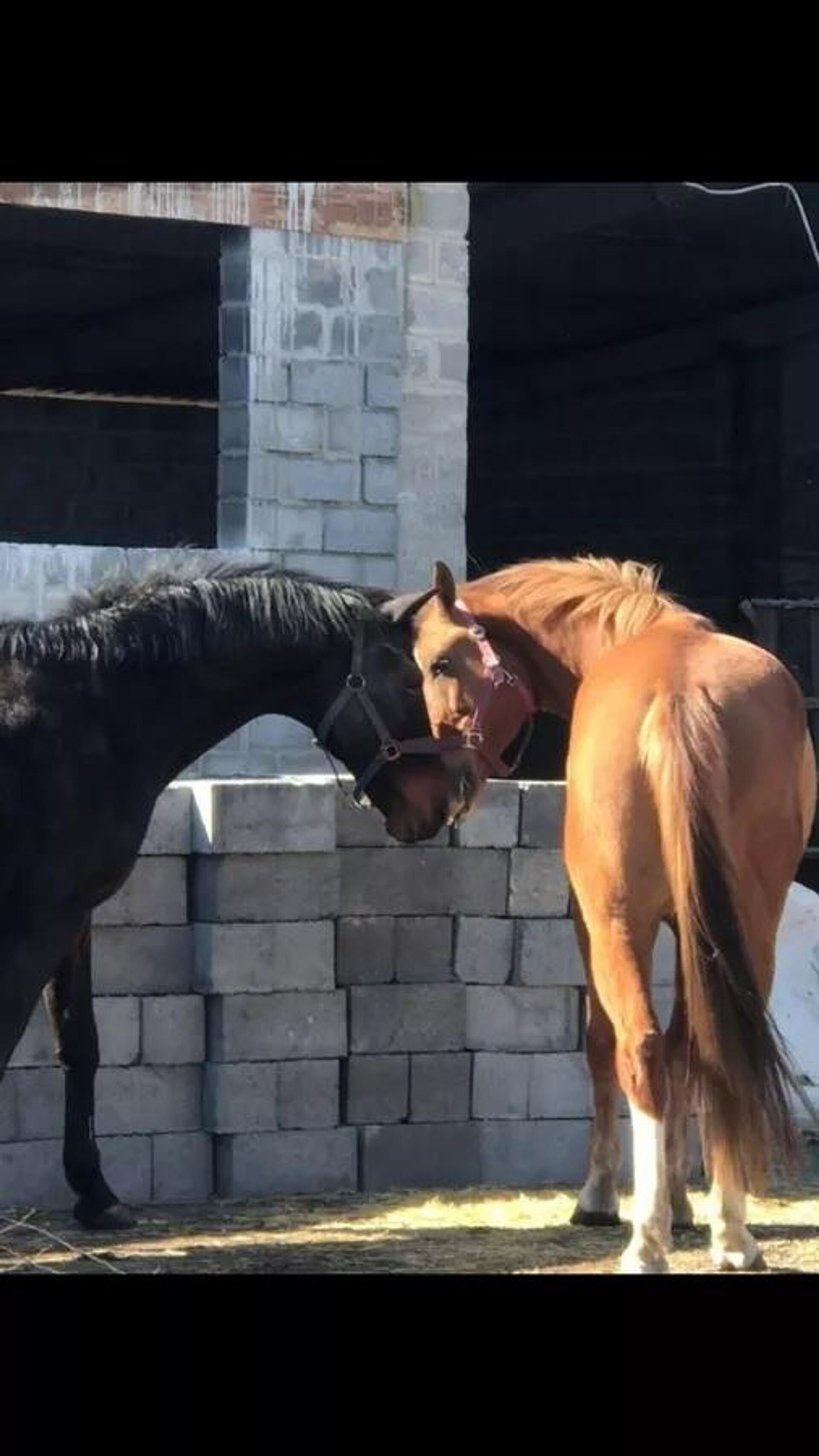
Horses from the Grand Prix Equestrian Club.
© Sputnik / Angelika Lyubchak’s Personal Archive
This stallion's "brother" was killed by a direct hit from a shell on a stable in Lugansk. And the day before, a day after another Ukrainian shell hit the stable. Coach Yuliya Kokoshkina, a pupil of hers, and a horse were killed instantly in the field where they were training.
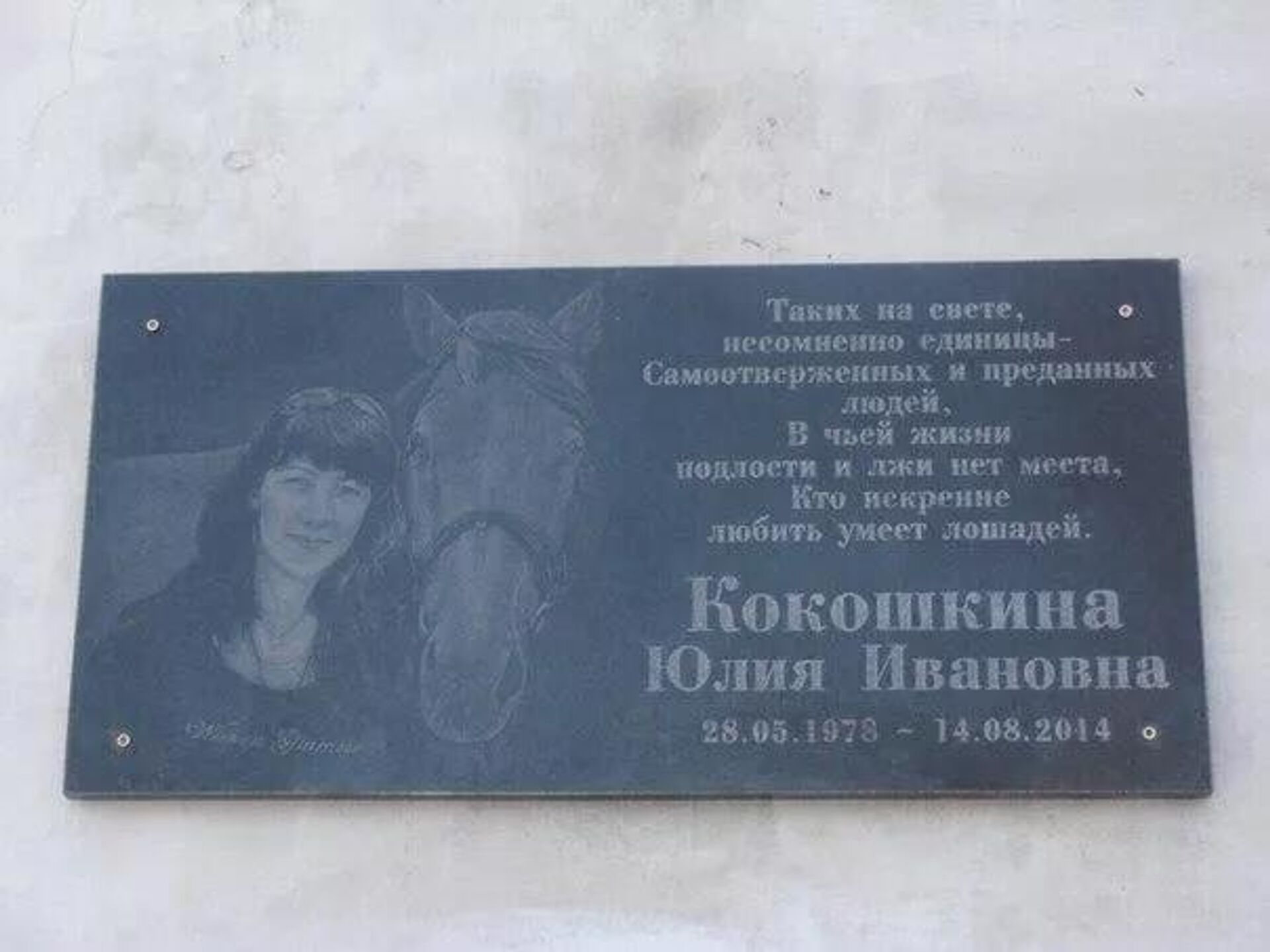
A memorial plaque honouring coach Yuliya Kokoshkina, who was killed on 14 August 2014 when the UAF shelled a stable in Lugansk.
© Sputnik / Public Sources
This is a story of people saving animals and animals saving men. How we behave towards those who are vulnerable and dependent on us largely defines each of us as a human being and as a society as a whole. War lays bare everything in starker relief. These stories are about people who chose the path of compassion during Donbass' darkest days.



